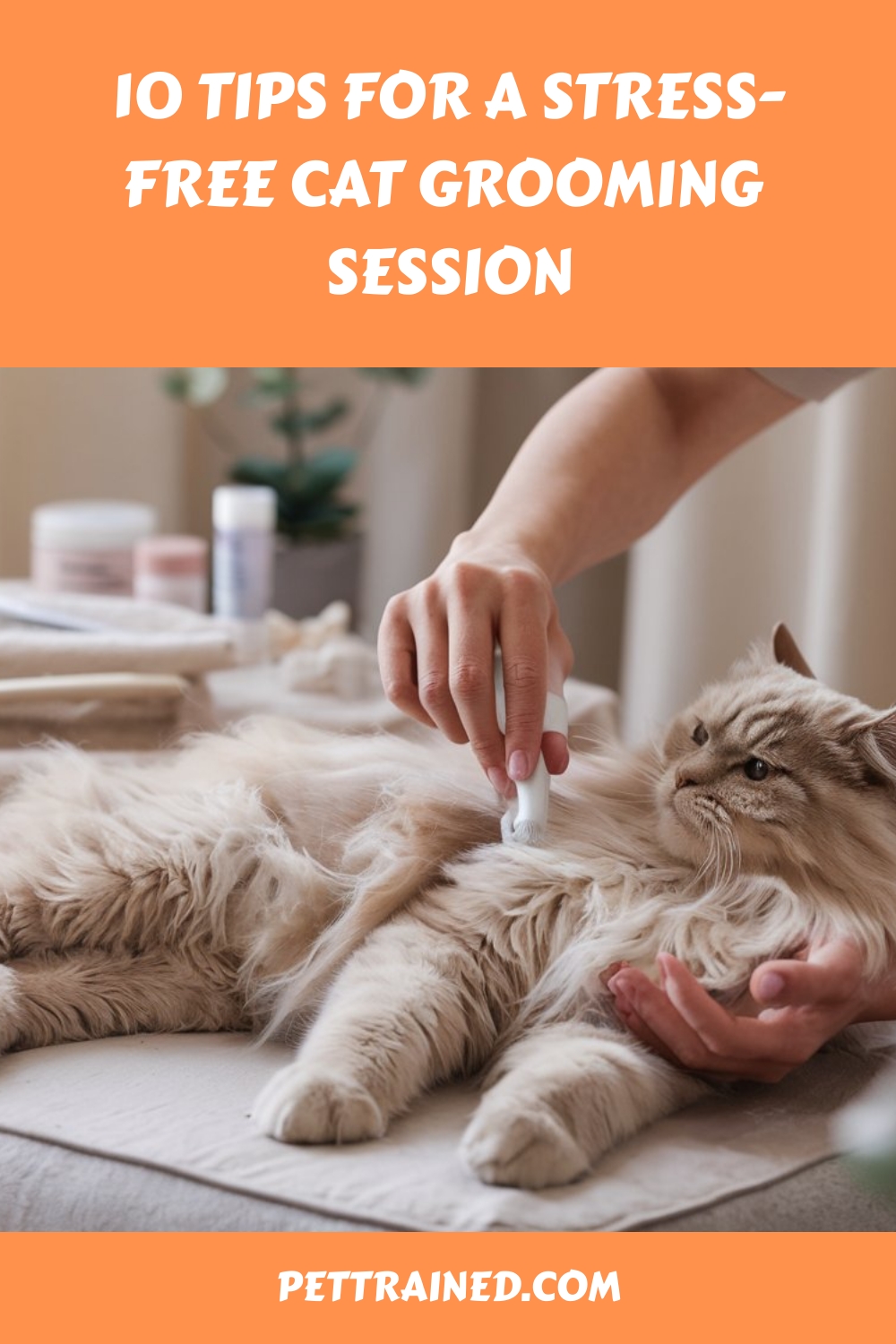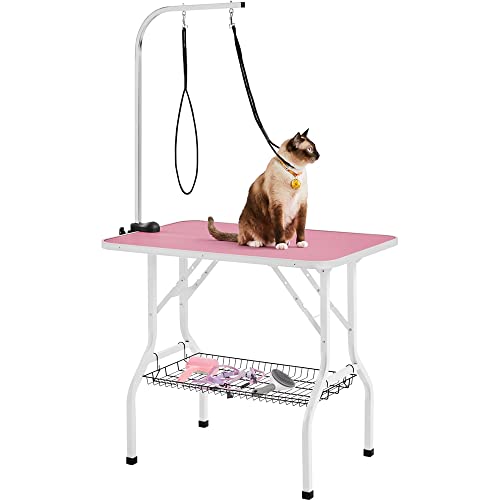As you gently run the brush through your cat’s tangled fur, the soft strokes and soothing sounds can be a calming experience for both of you – but only if you’ve set the stage for a stress-free grooming session. You’ve probably experienced the alternative: a hissing, squirming cat that makes the process a chore for both parties. To avoid this, it is crucial to approach grooming with a clear plan and the right techniques. By doing so, you’ll not only make the experience more enjoyable, but also strengthen the bond between you and your feline companion.
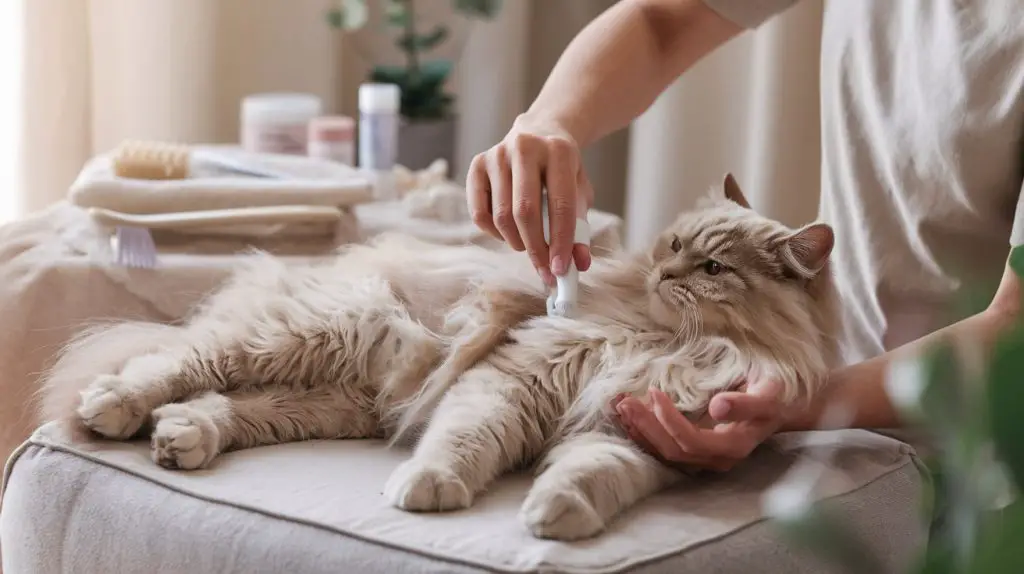
Table of Contents
1. Choose the Right Grooming Tools
Choosing the right grooming tools for your cat is vital for effective grooming. You’ll need to take into account the type of coat your cat has, as well as any specific grooming needs they may have.
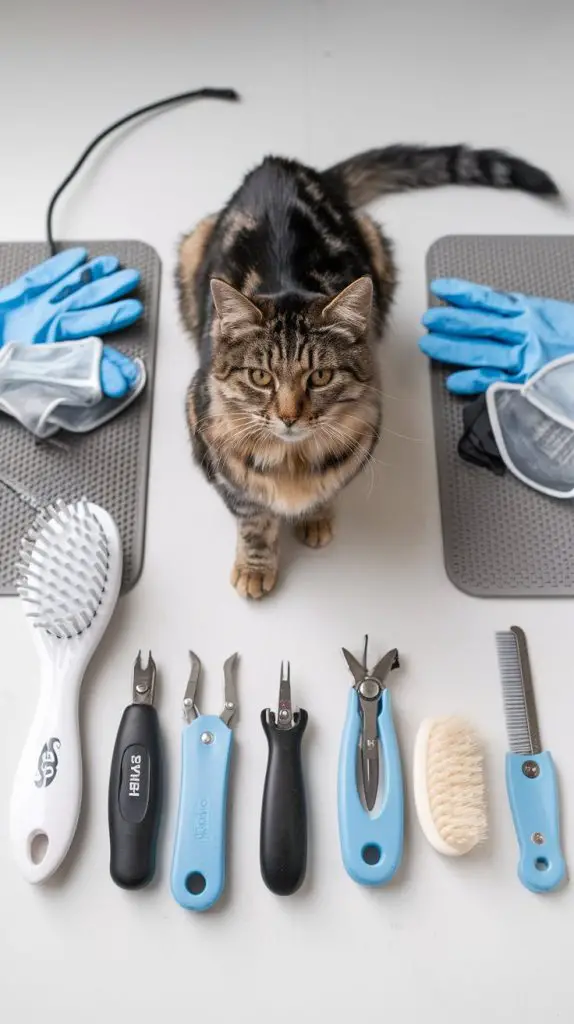
There are various grooming tool types available, including brushes, combs, nail clippers, and grooming gloves. Brushes are ideal for removing tangles and mats from long-haired cats, while combs are better suited for short-haired cats. Nail clippers are a must for keeping your cat’s nails trimmed, and grooming gloves help remove loose hair and distribute skin oils.
For a thorough grooming experience, think about investing in a professional scissor kit that includes straight, thinning, and curved scissors for precise trimming and contouring.
To guarantee your grooming tools remain effective, regular grooming tool maintenance is vital. Clean your brushes and combs after each use to prevent the buildup of dirt and oils.
This post contains affiliate links. However all the information provided on this site are my own honest opinions. See more in Disclaimer.
Store your grooming tools in a dry place to prevent rust or damage. You should also check your grooming tools regularly for signs of wear and tear, replacing them as needed.
2. Prepare a Quiet Grooming Space
As you prepare to groom your cat, it’s vital to create a quiet and comfortable space that minimizes stress and anxiety. You’ll want to identify a grooming environment that’s away from loud noises, other pets, and distractions. This will help your cat feel more at ease and allow you to groom them more efficiently.
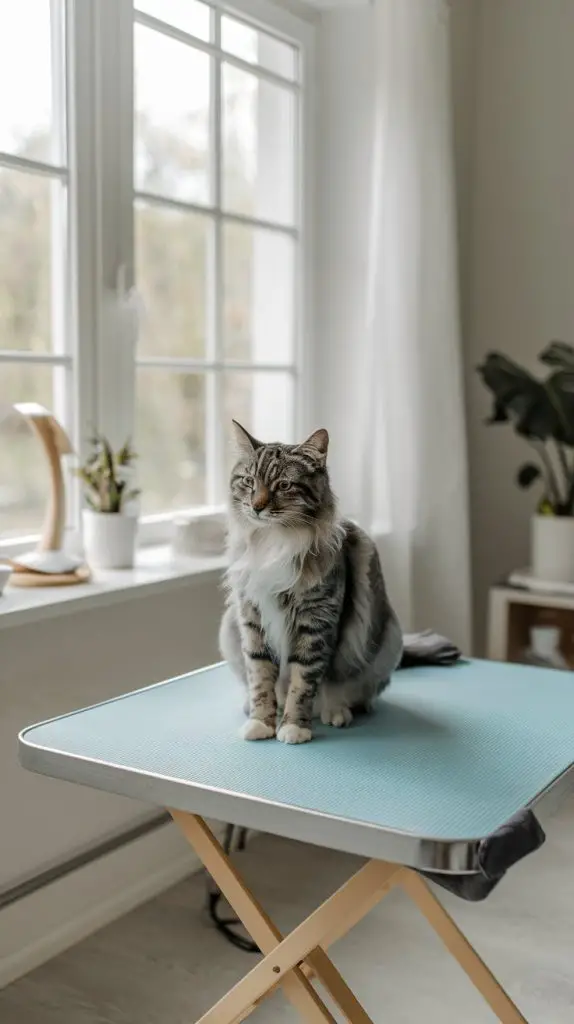
Consider a room with minimal foot traffic and few distractions, such as a laundry room or bathroom. Regular grooming is fundamental for long-haired cat health, as it helps reduce shedding, remove dirt, and enhance blood circulation. Establishing a consistent grooming routine can also strengthen the bond between you and your feline companion.
To further enhance the calming atmosphere, incorporate calming scents into the grooming space. You can use pheromone diffusers or calming essential oils like lavender or chamomile. These scents can help reduce your cat’s stress levels and promote relaxation.
Make sure to use these scents in moderation, as cats have a sensitive sense of smell. By creating a peaceful grooming environment, you’ll be able to reduce your cat’s stress and anxiety, making the grooming process a more enjoyable experience for both you and your cat.
Confirm the grooming space is well-ventilated and at a comfortable temperature for your cat.
3. Brush Your Cat Regularly
Regular brushing is essential for maintaining your cat’s overall health, and it begins with selecting the right brush for the job. Different fur types require specific brushes, so it’s vital to choose one that suits your cat’s coat. For example, a slicker brush is ideal for short-haired cats, while a pin brush is better suited for long-haired breeds.
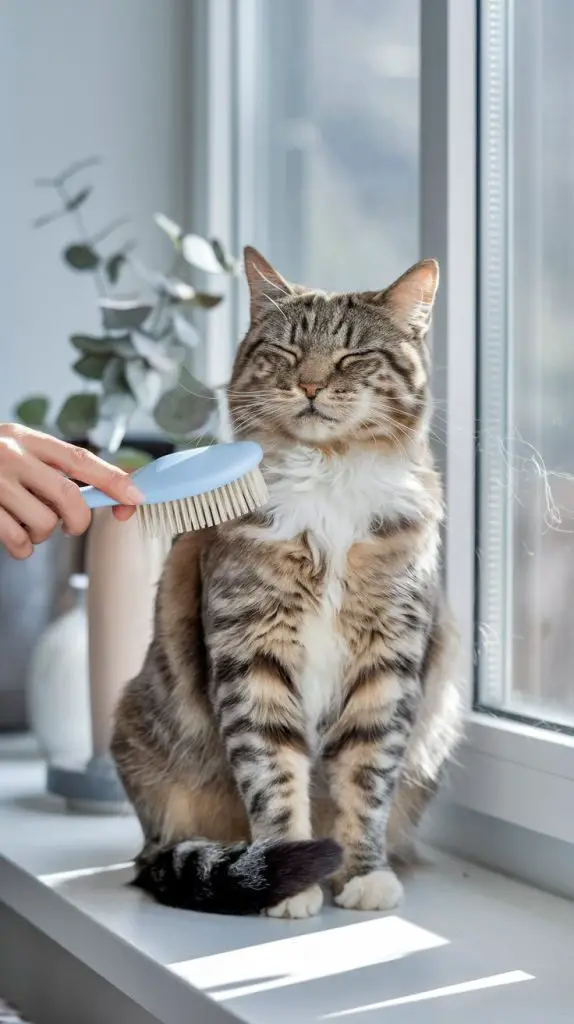
Brushing your cat regularly helps with shedding management, reducing the amount of loose hair and preventing hairballs. Using quality cat brushes can considerably aid in preventing mats and tangles, which are common issues for many cat owners. Regular grooming sessions also help manage loose hair and reduce the likelihood of matting.
You’ll want to brush your cat at least once a week, but more frequently during shedding season. Be gentle and work slowly, following the natural direction of the fur. This will help prevent matting and tangling, which can be painful for your cat.
Regular brushing also distributes skin oils, promoting healthy skin and a shiny coat. By brushing your cat regularly, you’ll be able to detect any skin problems or health issues early on, allowing you to take action and prevent more serious conditions from developing.
Consistency is key when it comes to brushing your cat, so make it a regular part of your grooming routine.
4. Get Your Cat Used to Touch
With your cat’s coat looking its best thanks to regular brushing, it’s now time to focus on making them comfortable with touch. This is essential, as a stress-free grooming session relies heavily on your cat’s tolerance for physical contact.
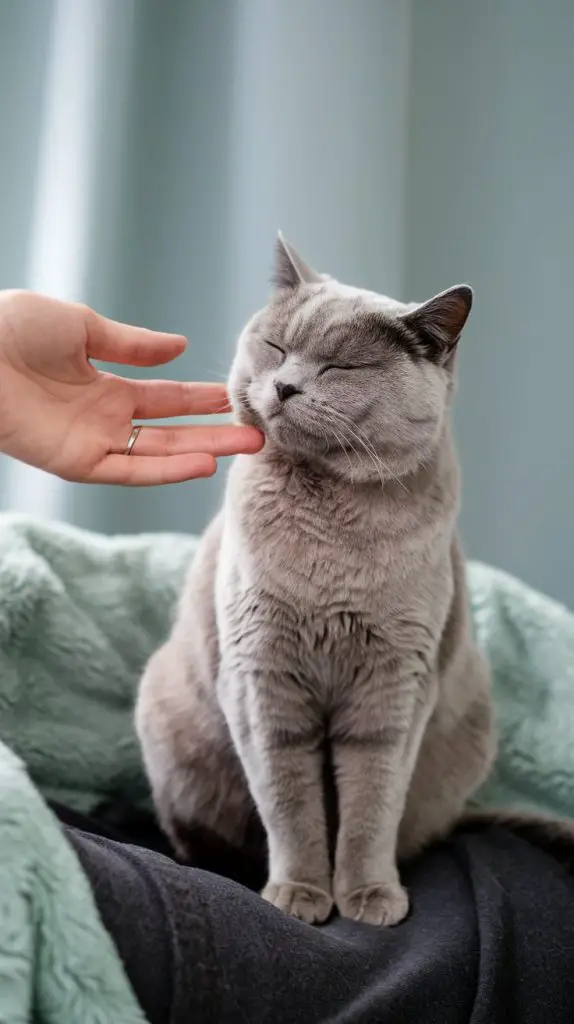
Observe your cat’s body language carefully; if they tense up or try to move away, it’s a sign that they’re uncomfortable.
You can help your cat become more receptive to touch by incorporating gentle petting and stroking into your daily interactions. Begin by lightly stroking their favorite areas, such as the head, cheeks, and behind the ears.
As your cat becomes more relaxed, you can gradually increase the touch to other areas, like the paws, belly, and tail.
Be mindful of your cat’s grooming frequency, as some cats may require more frequent touch to become comfortable. Conversely, others may need less.
Paying attention to your cat’s individual needs will help you tailor your approach to their unique personality and temperament.
5. Start With Short Sessions
Before diving into a full-scale grooming session, it’s crucial to begin with short sessions to help your cat adjust to the process. This allows you to gauge your cat’s tolerance and comfort level, ensuring a stress-free experience. Start with sessions lasting around 5-10 minutes, gradually increasing the duration as your cat becomes more comfortable.
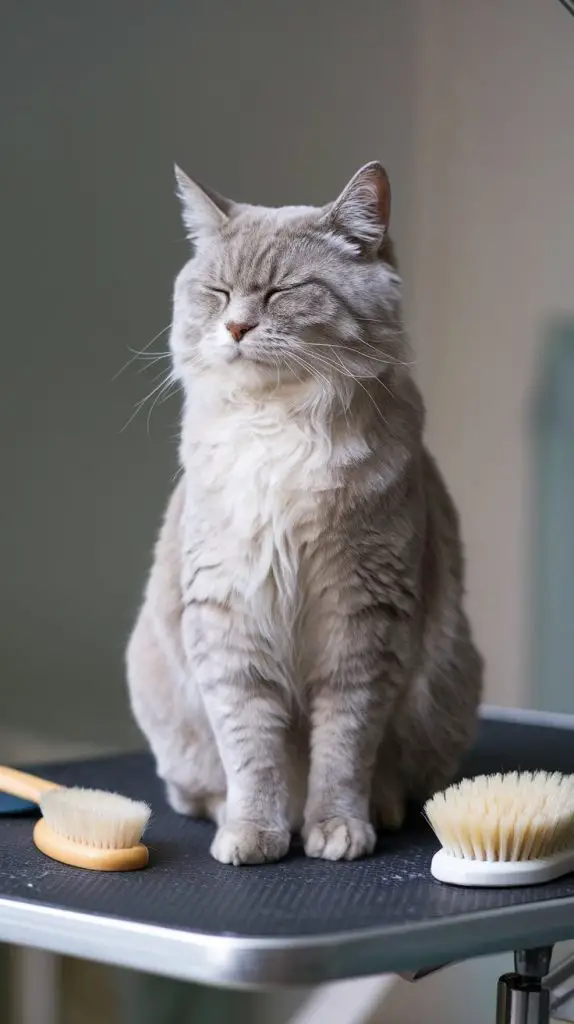
When determining the ideal grooming frequency, consider the following factors:
- Your cat’s age, health, and lifestyle
- The length and thickness of their coat
- Any skin allergies or sensitivities
- The amount of shedding or matting
Keep in mind that feline comfort should always be your top priority. If your cat shows signs of stress or discomfort during a grooming session, stop immediately and try to identify the cause.
6. Be Gentle and Patient Always
As you establish a grooming routine that takes into account your cat’s unique needs and comfort level, it’s vital to prioritize a gentle and patient approach. Your cat’s body language will be a significant guide during grooming sessions. Pay attention to tail swishing, ear flattening, and trying to move away – these are all signs that you’re pushing their limits.
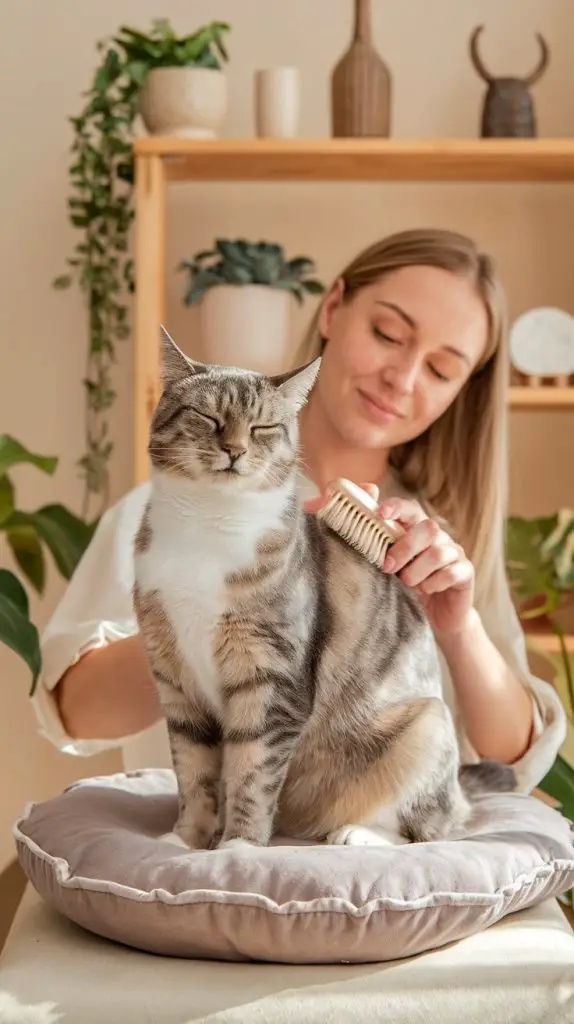
If you notice any of these cues, slow down or take a break to give your cat time to relax. Maintaining a gentle and patient demeanor will also help you adjust to your cat’s preferred grooming frequency. Some cats enjoy frequent grooming, while others may prefer less frequent sessions.
Observe your cat’s behavior and adjust your grooming schedule accordingly. By being gentle and patient, you can create a positive association with grooming, making it easier to maintain your cat’s coat health and strengthen your bond.
7. Avoid Sensitive Areas First
Most cats have sensitive areas that they prefer not to have touched, and it’s vital to identify and avoid these areas during grooming, especially when first starting out.
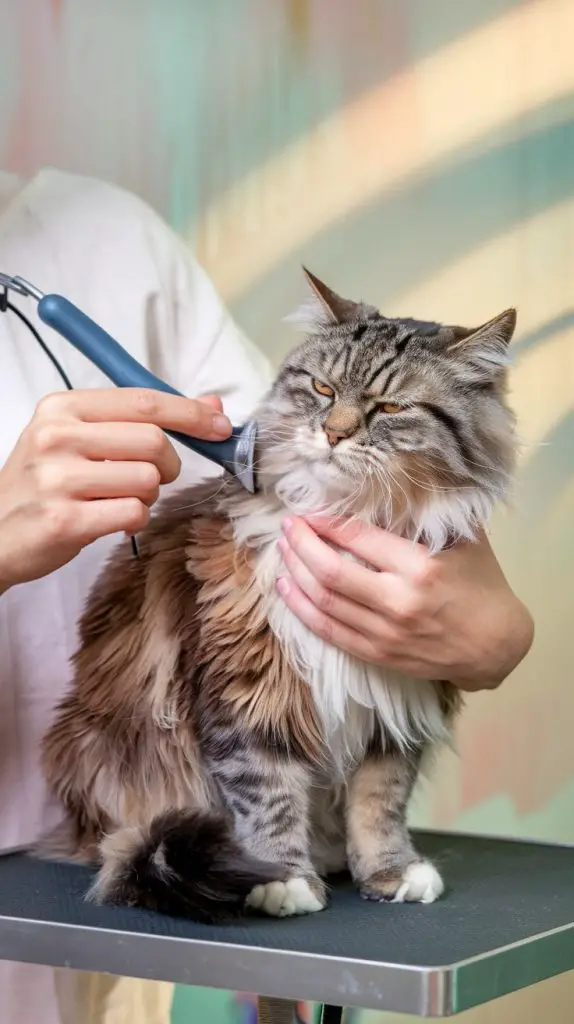
Understanding cat anatomy is key to locating these sensitive zones. You’ll want to exercise caution when handling areas that are prone to sensitivity, such as the eyes, ears, paws, and tail.
When you’re first starting to groom your cat, it’s important to establish trust by avoiding these sensitive areas. As you gain more experience and your cat becomes more comfortable with the grooming process, you can gradually introduce these areas into your routine.
Some areas to approach with caution include:
- Eyes: Avoid touching or rubbing your cat’s eyes, as this can cause discomfort and even lead to injury.
- Ears: Be gentle when cleaning your cat’s ears, and avoid inserting any objects into the ear canal.
- Paws: Be careful when handling your cat’s paws, as the pads and toes can be sensitive.
- Tail: Avoid pulling or tugging on your cat’s tail, as this can cause pain and discomfort.
8. Reward Good Behavior With Treats
Building on the trust you’ve established by avoiding sensitive areas, you can further reinforce your cat’s positive associations with grooming by rewarding good behavior with treats.
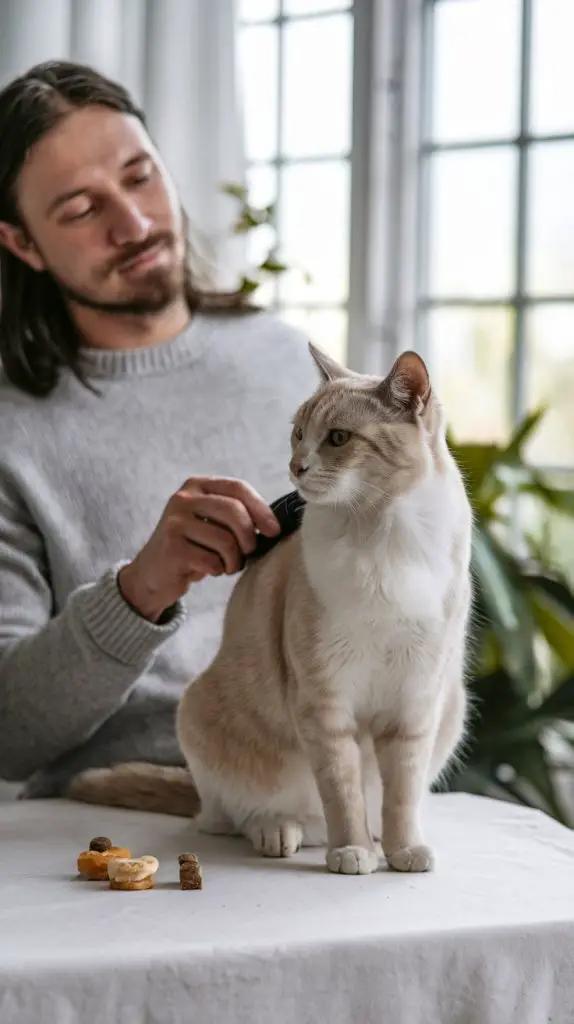
Treat selection is essential in this process, as you’ll want to choose items that are both palatable and nutritious for your cat. Opt for small, bite-sized treats that can be easily consumed during grooming. You can also consider using freeze-dried or green dental chews, which not only reward good behavior but also promote oral health.
Trending in Cats:
Timing rewards is also important, as you’ll want to associate the treats with desired behaviors. Reward your cat immediately after they exhibit calm behavior during grooming, such as remaining still or allowing you to brush their fur without resistance.
Consistency is key, so be sure to reward your cat for good behavior every time it occurs. This positive reinforcement will help your cat associate grooming with pleasant experiences, making future sessions less stressful for both you and your cat.
9. Consider a Grooming Table
One key investment to contemplate for efficient and stress-free grooming sessions is a grooming table. With a grooming table, you can keep your cat at a comfortable height, allowing for better access to their coat. This convenient setup makes it easier to brush, trim, and inspect their fur, reducing strain on your back and neck.
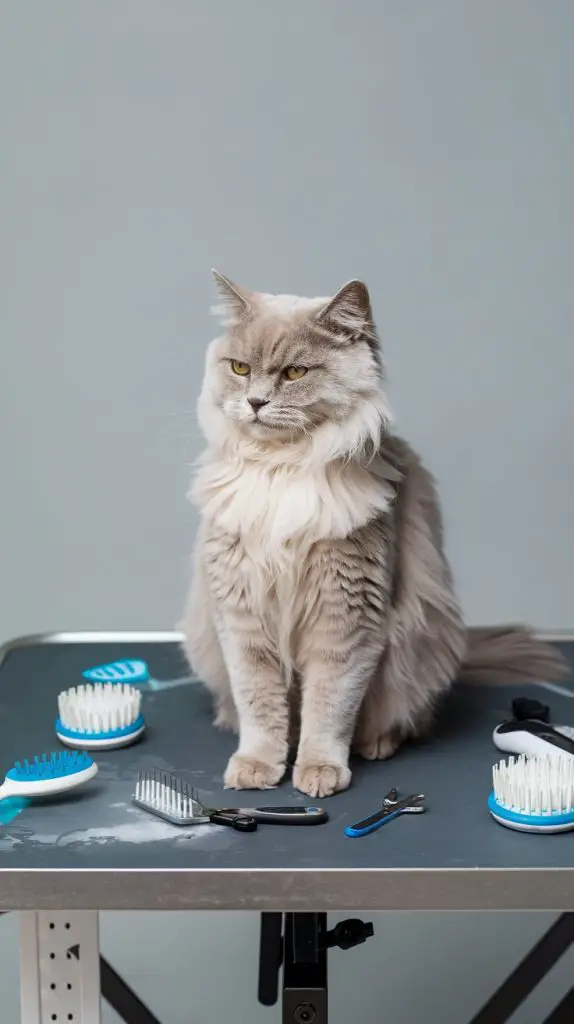
In addition to providing a comfortable working height, a grooming table also offers several benefits for both you and your cat. Some key advantages include:
- Easier access to hard-to-reach areas, such as the cat’s belly and paws
- Improved visibility of tangles and mats
- Reduced shedding and hair dispersal
- Enhanced stability and security for your cat
When selecting a grooming surface, consider a table with a non-slip, easy-to-clean surface, such as a rubberized or textured coating. A sturdy base and adjustable height settings will also guarantee the table remains stable and secure during use.
10. Make It a Positive Experience
Numerous factors contribute to a successful cat grooming session, but an important aspect is making the experience enjoyable for your cat.
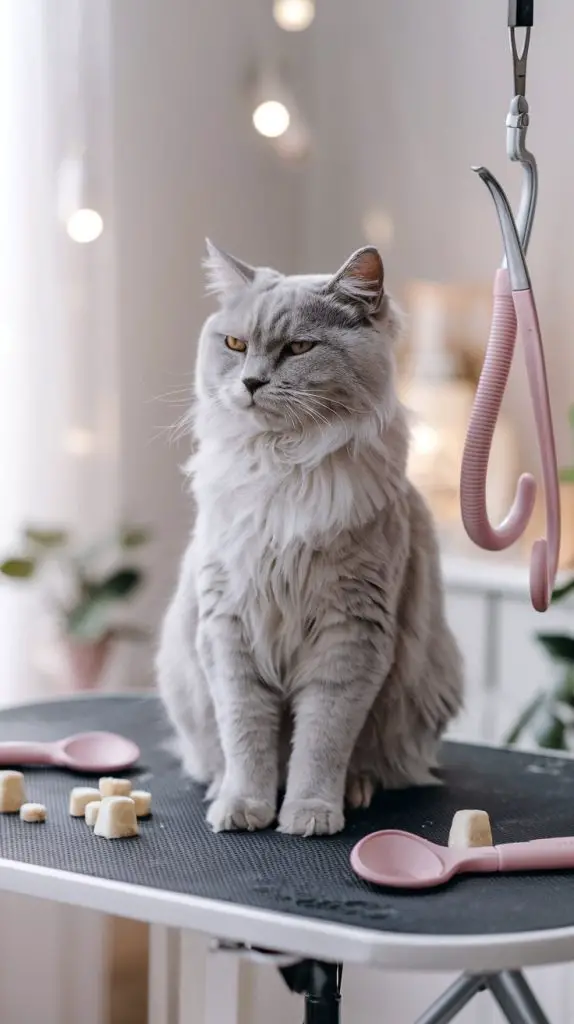
You’ll want to create a positive association with grooming to minimize stress and anxiety. To achieve this, it’s vital to understand cat behavior and body language. Pay attention to your cat’s vocalizations, tail positions, and ear postures, as these can indicate their comfort level.
Reward your cat with treats, praise, and affection when they exhibit calm behavior during grooming. This positive reinforcement will help them associate grooming with pleasant experiences.
Be gentle and patient, as rough handling can lead to fear and aggression. By making grooming a positive experience, you’ll not only reduce your cat’s stress but also reap the numerous grooming benefits, such as improved coat health, reduced shedding, and strengthened bonding between you and your cat.
Regular grooming sessions can even help identify potential health issues early on, allowing for prompt veterinary attention and treatment.
Frequent Questions and Answers
How Often Should I Groom My Cat to Prevent Hairballs?
You should groom your cat regularly, ideally 2-3 times a week, to prevent hairballs. This grooming frequency helps reduce shedding and hair ingestion, key factors in hairball prevention, keeping your cat’s digestive system healthy.
Can I Groom My Cat When It’s Shedding Heavily?
When your cat’s shedding heavily, it’s like a blizzard – fur everywhere! Watch for shedding signs like excessive licking or scratching. Grab your grooming tools, and gently work out those tangles to prevent matting and reduce stress.
Should I Bathe My Cat Before or After Grooming?
You should bathe your cat before grooming, using gentle cat bathing techniques and shampoo. Afterward, use a conditioner and apply a detangling spray, followed by grooming product recommendations specifically suited for your cat’s coat type.
Can I Use Human Hair Clippers on My Cat?
Don’t navigate a minefield by using human hair clippers on your cat! Take essential safety precautions and prioritize clipper maintenance to avoid injuring your pet; instead, use clippers specifically designed for cats’ sensitive skin and coats.
How Do I Groom a Cat With Long Hair and Matting?
You’ll need to gently work out mats with a wide-tooth comb or slicker brush, taking care not to pull on the hair. Regular grooming with the right tools prevents matting; use a detangling spray to make the process easier.
